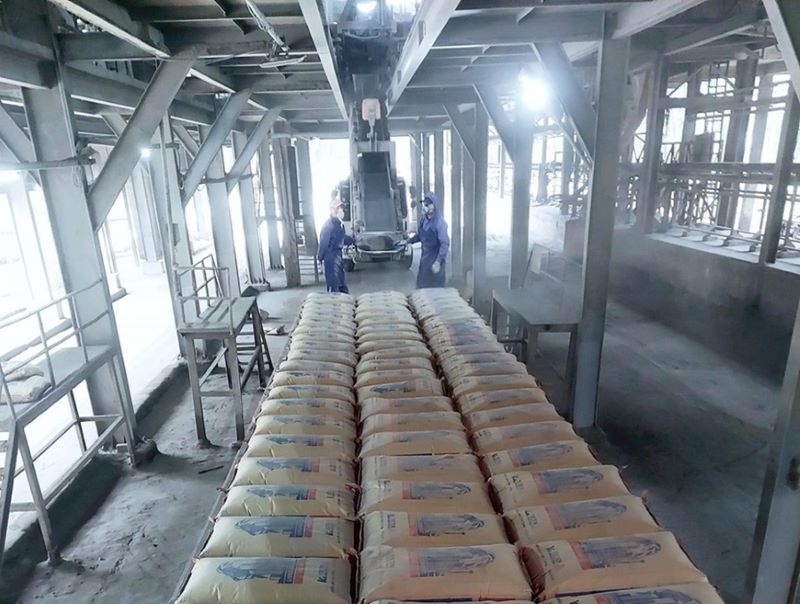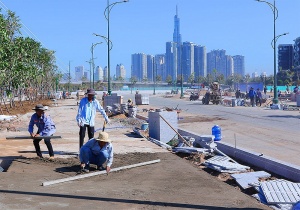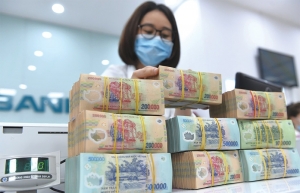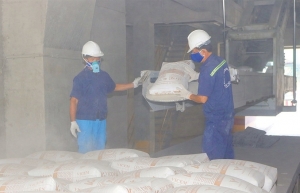Headwinds exacerbate cement sector woes
Several cement plants have been reportedly running at 70-75 per cent capacity, with the industry sitting on a stockpile approximating five million tonnes.
The sector’s total designed capacity surpasses 120 million tonnes per year, and four new production lines with a combined capacity of over 11 million tonnes have yet to be put into operation due to the current situation.
 |
In Q1 this year, Vicem Ha Tien, a member of the state conglomerate Vietnam Cement Industry Corporation (Vicem), saw a 12 per cent drop in its revenue on-year, falling to $62.3 million, with its post-tax profit contracting by more than $1.04 million.
Similarly, Bim Son Cement saw an 18.6 per cent drop in its net revenue, falling to 28.7 million with over $2 million in losses, marking its seventh consecutive loss-making quarter since Q3 of 2022.
Vicem But Son also counted losses of $2.3 million in Q1, marking its sixth consecutive loss-making quarter.
At a conference on how best to address the challenges in the cement, steel, iron, and other building materials' industries chaired by Prime Minister Pham Minh Chinh on June 15, Deputy Minister of Construction (MoC) Nguyen Van Sinh revealed that many cement producers are struggling due to borrowing, soaring production costs, and slow consumption.
Sinh proposed the PM and State Bank of Vietnam make policy adjustments related to debt extension and lowering the lending rates of loans of cement and building material firms to suit their current capacity to fulfill these obligations.
The MoC representative also proposed the PM and the Ministry of Finance revise the tax policy to ensure competitive advantages with other cement-exporting countries, for instance reducing the current clinker export tariff from 10 per cent to zero per cent.
Nguyen Quang Cung, chairman of the Vietnam Cement Association, suggested that to stimulate cement consumption, it is necessary to encourage the use of cement in motorway and viaduct construction in regions with weak soils such as the Mekong delta and several areas in Vietnam’s central and mountainous regions.
"It is also important to reinforce road surfaces by using cement instead of using soil and gravel as by traditional technology to increase the project durability," said Cung.
"Never before has the cement industry been at such a critical stage. If the current predicament drags on, the possibility of domestic ownership transferring to foreign investors might occur, posing the threat of the cement sector falling into the hands of foreign businesses, thereby reducing the country's ability to deal with pricing and market moderation in the long term," Cung added.
 | Cement groups take on tough period Amid unprecedented complexities, cement producers are hoping for breakthroughs in public projects to stimulate demand and accelerate consumption. |
 | Banking sector gets ball rolling on 2024 performance Forecasts for Vietnam from financial institutions are optimistic for this year, primarily due to policies for reducing interest rates and bolstering digitalisation. |
 | Cement export strategies in good stead There has been an upsurge in the intake of cement export orders to the United States, with new faces succeeding in making forays into the demanding market. |
What the stars mean:
★ Poor ★ ★ Promising ★★★ Good ★★★★ Very good ★★★★★ Exceptional
Related Contents
Latest News
More News
- Sun Group breaks ground on $2 billion Van Don casino complex (December 19, 2025 | 18:14)
- Rare, beautiful, sustainable: the mark of iconic real estate (December 19, 2025 | 08:00)
- Owner-occupied housing stabilises, paving the way for new growth cycle (December 18, 2025 | 17:04)
- Unlocking urban potential of smart cities (December 18, 2025 | 16:50)
- Green finance offers 'passport' for Vietnamese construction, building materials firms (December 15, 2025 | 08:00)
- Gamuda Land commit long-term investment (December 12, 2025 | 11:49)
- HITC ties up with Evolution to develop AI and hyperscale data centres in Vietnam (December 11, 2025 | 12:09)
- Real estate deals boom via high-profile names (December 08, 2025 | 11:32)
- Industrial segment shaped by M&As (December 08, 2025 | 08:00)
- The Privé sets the benchmark for luxury real estate (December 05, 2025 | 08:28)

 Tag:
Tag:


























 Mobile Version
Mobile Version